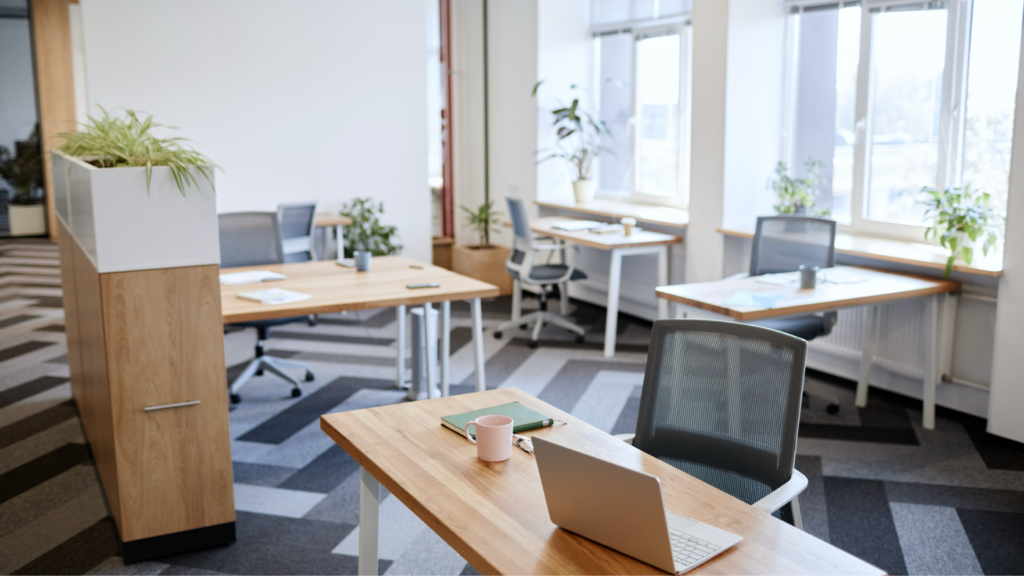The modern workplace is undergoing a significant transformation, driven by the rise of hybrid work and the growing demand for high-quality, flexible office spaces. This shift is not just a trend but a response to the evolving needs and preferences of employees who seek a more balanced and enriched work environment. In its 2024 Global Workplace Study, Gensler noted office workers globally spend almost 80% of their time in an office setting. In the U.S., 69% of respondents work in an office-setting in a typical week.
From Traditional to Hybrid: A New Design Paradigm
Traditional office spaces have typically prioritized functionality over comfort or aesthetic appeal. However, the demand for hybrid work models has prompted a rethink in office design strategies, Gensler noted a shift from real estate occupancy to people-centric performance in terms of how employees feel and work in the workplace. Employers are now blending elements from hospitality, retail, and residential sectors into their office designs, creating “resimercial” spaces. These designs combine the comforts of home with the functionality of an office, promoting productivity and employee well-being. Further, Gensler noted this is the first time people spend the same amount of time working individually as they do with others in person and virtually.
Addressing Vacant Office Spaces
As of mid-year 2024, there was more than 1.0 billion square feet of vacant office space in the U.S. models. The evolution of workplace culture and usage highlights the need for a shift in office space design. Transforming these spaces to meet the demands of the hybrid work model and high-quality space preferences can revitalize these assets and attract tenants once more. In many cases, this necessitates upgrading technology to accommodate both in-person and virtual needs and capabilities. However, building owners must balance the renovation cost with the potential revenue. In some cases, the imbalance makes renovation in the current environment too expensive or unnecessary due to a lack of demand.
While converting outdated office buildings into modern, hybrid-friendly spaces can be expensive, it can be a worthwhile investment for well-located properties. Urban areas offer a unique opportunity to create high-value office spaces that meet contemporary standards, maximizing real estate investments and supporting broader business strategies.
Optimizing Real Estate Investments
Effectively managing real estate portfolios is crucial for companies looking to optimize their investments. This process begins with site selection and extends to identifying ideal locations and buildings that align with operational goals. Companies can transform traditional office spaces into engaging, productive environments by assembling a team of experts in workplace strategy, site selection, financial analytics, and process management.
Key Aspects of Hybrid Work Model Integration
- Flexible Office Design: Crafting office spaces that support both remote and in-office work, enhancing productivity and employee satisfaction.
- Technology and Infrastructure: Implementing technology solutions that facilitate seamless hybrid work.
- Hospitality and Retail Principles: Creating welcoming and dynamic environments with collaborative spaces, wellness areas, and leisure facilities that reflect company culture and promote employee engagement.
The shift towards hybrid work models and high-quality office spaces is reshaping the future of work. By incorporating elements from hospitality, retail, and residential design, and focusing on health, wellness, and sustainability, companies can create engaging, productive environments that meet the needs of today’s workforce. Colliers stands ready to lead this transformation, providing the expertise and solutions necessary to thrive in the new era of office space design.

 Mia Jarrell
Mia Jarrell

 Craig Hurvitz
Craig Hurvitz Justin Smutko
Justin Smutko
 Sheena Gohil
Sheena Gohil Bob Shanahan
Bob Shanahan Dougal Jeppe
Dougal Jeppe Kai Shane
Kai Shane
 Anjee Solanki
Anjee Solanki Raul Saavedra
Raul Saavedra